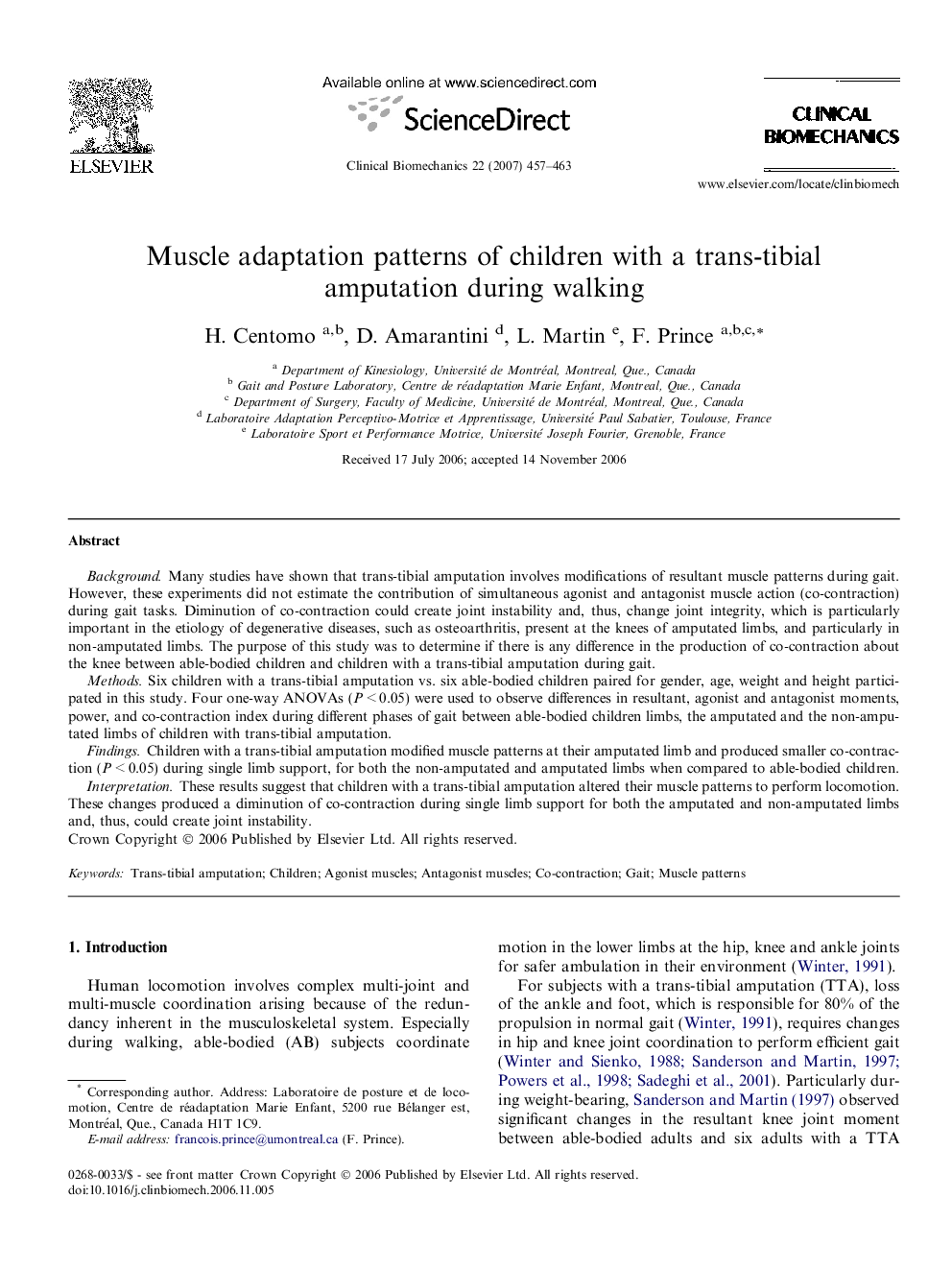| Article ID | Journal | Published Year | Pages | File Type |
|---|---|---|---|---|
| 4051302 | Clinical Biomechanics | 2007 | 7 Pages |
BackgroundMany studies have shown that trans-tibial amputation involves modifications of resultant muscle patterns during gait. However, these experiments did not estimate the contribution of simultaneous agonist and antagonist muscle action (co-contraction) during gait tasks. Diminution of co-contraction could create joint instability and, thus, change joint integrity, which is particularly important in the etiology of degenerative diseases, such as osteoarthritis, present at the knees of amputated limbs, and particularly in non-amputated limbs. The purpose of this study was to determine if there is any difference in the production of co-contraction about the knee between able-bodied children and children with a trans-tibial amputation during gait.MethodsSix children with a trans-tibial amputation vs. six able-bodied children paired for gender, age, weight and height participated in this study. Four one-way ANOVAs (P < 0.05) were used to observe differences in resultant, agonist and antagonist moments, power, and co-contraction index during different phases of gait between able-bodied children limbs, the amputated and the non-amputated limbs of children with trans-tibial amputation.FindingsChildren with a trans-tibial amputation modified muscle patterns at their amputated limb and produced smaller co-contraction (P < 0.05) during single limb support, for both the non-amputated and amputated limbs when compared to able-bodied children.InterpretationThese results suggest that children with a trans-tibial amputation altered their muscle patterns to perform locomotion. These changes produced a diminution of co-contraction during single limb support for both the amputated and non-amputated limbs and, thus, could create joint instability.
